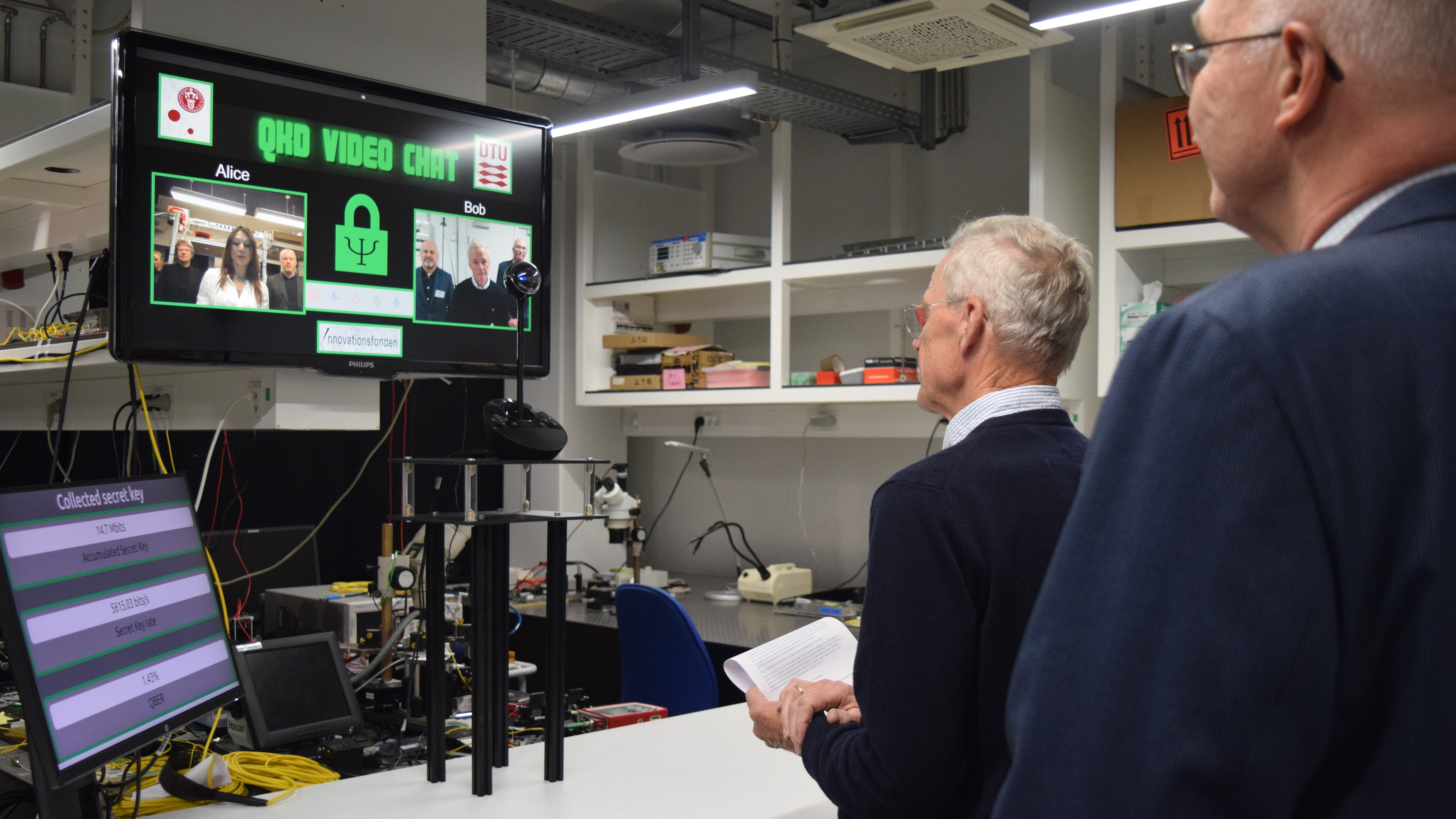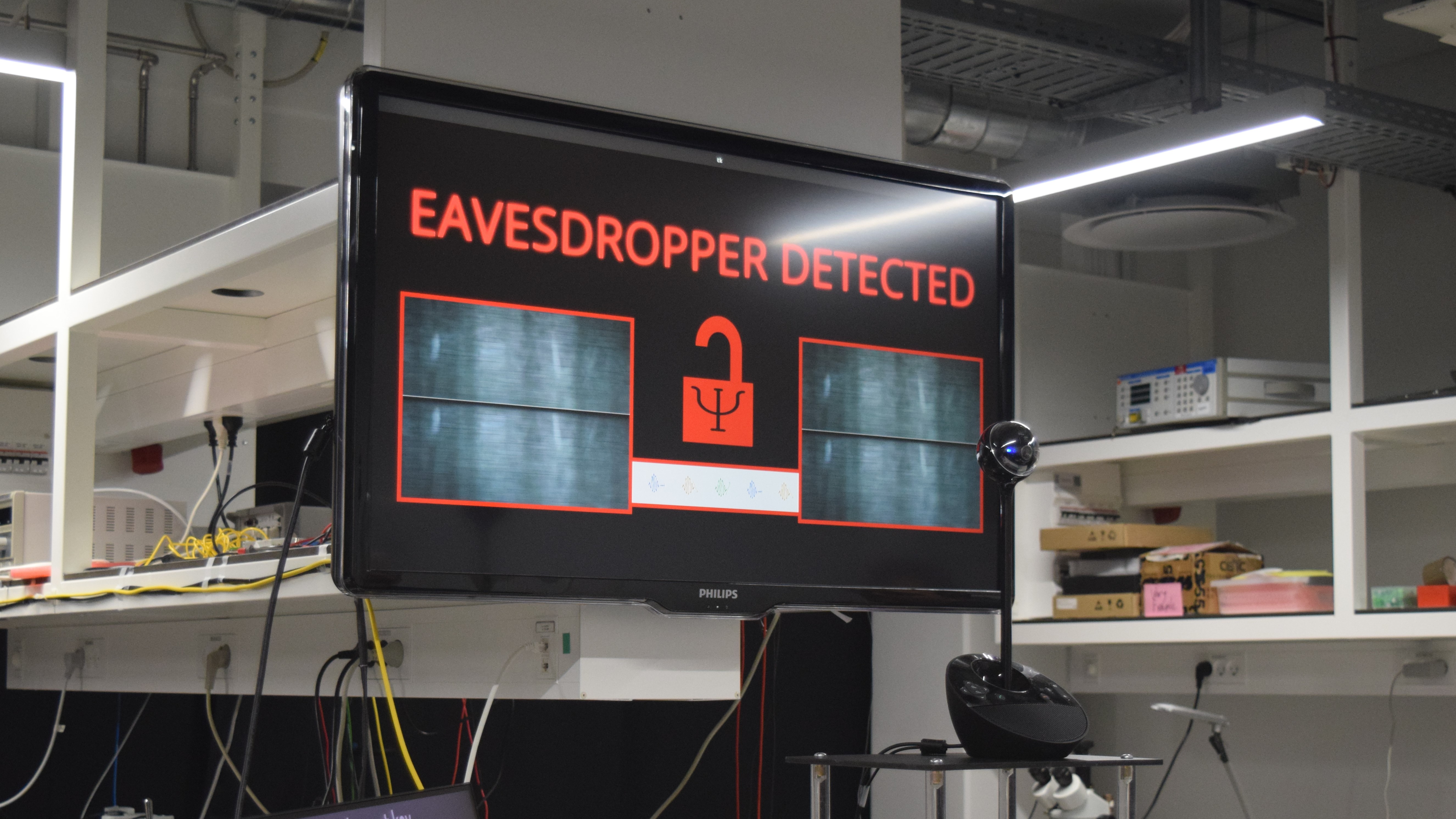Facts on the quantum encryption link
Quantum encryption: Quantum encryption relies on exchanging so-called quantum keys between sender and receiver protected by quantum technology. Quantum key distribution systems can never be broken, even by the most powerful future quantum computers.
The core of such a system is sharing the key using so-called single photons (light ‘particles’). Any attempt to eavesdrop on the system will require intercepting a photon—which is indivisible—meaning that any attempt at eavesdropping will be detected.
About the project: The quantum encryption link has been developed under the FIRE-Q project—supported by Innovation Fund Denmark—and comprises academic and industrial partners that are now ready to commercialize the technologies. The technology is the result of 20 years of basic research supported by the Danish National Research Foundation through the research centres Silicon Photonics for Optical Communication (SPOC) and Hybrid Quantum Networks (Hy-Q).
The FIRE-Q project also involves Danish companies which, in the long term, can utilize the technologies commercially; Sparrow Quantum—a spin-out from the Niels Bohr Institute—and SiPhotonIC, a spin-out from DTU Electro. In the long term, the demonstration represents an essential step towards a quantum-based Internet where quantum computers can be connected and thus become even more potent.



